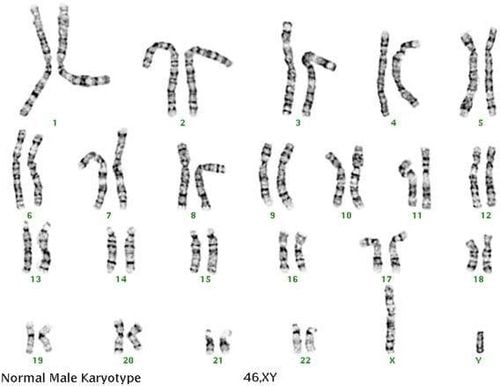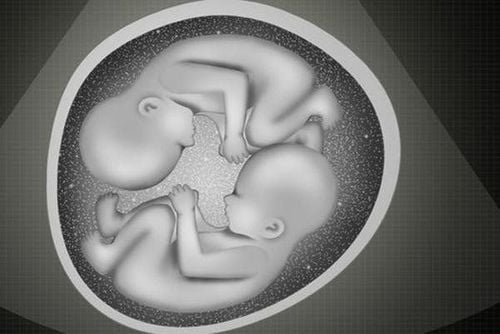This is an automatically translated article.
Article by Dr. Han Thi Thu Huong - Medical Genetics Block, Vinmec High-Tech Center
Cri du chat syndrome is a rare genetic disorder in which a short arm of chromosome 5 is lost. Cri du chat syndrome is also known by several names: Cat meow syndrome; 5p- syndrome; CdCS syndrome; Lejeune syndrome.
1. What is Cri du chat syndrome?
Cri du chat syndrome occurs with an incidence between 1:15,000 and 1:50,000 live births. Some cases may go undiagnosed, making it difficult to determine the true frequency of this disorder in the general population.
Cri du chat syndrome was first described in the medical literature in 1963 by Dr. Lejeune. In French, Cri du chat means cat cry.
2. Signs and symptoms

Cân nặng của trẻ sau khi sinh thấp,thiếu hụt tăng trưởng có thể là dấu hiệu của hội chứng Cri du chat
The symptoms of Cri du chat syndrome vary from case to case:
During the first few weeks infants have a characteristic high-pitched, high-pitched squeal, like a cat's, however as the child grows older it becomes less pronounced. Low birth weight, growth deficiency, hypotonia, and small head circumference. Distinctive facial features: unusually round or plump face, wide nose bridge, widely spaced eyes, crossed eyes, slanted eyelid folds, deep inner upper eyelid folds, low ears and abnormally small jaws, high palate, incomplete closure, cleft lip... Delayed acquisition of skills that require mental and muscular coordination such as head control, sitting up and walking. About half of children with Cri du chat syndrome are able to dress themselves by the age of 5. Moderate to severe intellectual disability, speech delay. Some children may display hyperactivity or self-harm. Newborns may have difficulty feeding due to low muscle tone, poor feeding, gastroesophageal reflux disease, pneumonia. In one study, only 50% of children with Cri du chat syndrome were able to feed themselves with a spoon by the age of 3.5 years. Scoliosis, with a higher risk of ear infections and hearing loss. About 15-20% of infants with Cri du chat syndrome have a congenital heart defect. Some less common manifestations include: inguinal hernia, kidney and urinary tract abnormalities, shortness of breath, fused fingers, myopia, cataracts, premature graying of hair, respiratory and intestinal infections repeat...
3. Cause
Cri du chat syndrome is the result of a deletion in the short arm (p) of chromosome 5. In people with Cri du chat syndrome, the range and severity of symptoms may vary. each other, depending on the length or location of the missing chromosome segment.
Most cases of Cri du chat syndrome occur as a result of unexplained de novo development very early in embryonic development. Most deletions (80-90%) are of paternal origin, which means they can occur as part of spermatogenesis. Parents of a child with Cri du chat syndrome usually have chromosomally normal and the risk of having another child with a chromosomal abnormality is relatively low.
4. Diagnosis

Xét nghiệm công thức nhiễm sắc thể để chuẩn đoán
To diagnose Cri du chat syndrome, doctors need to do a thorough clinical assessment, determine the characteristic manifestations combined with some tests such as Karyotyping (Chromosome Formulary Test) and FISH (Hybrid Hybridization). in situ) to detect deletion mutations in the short arm of chromosome 5.
5. Treatment
The treatment of Cri du chat syndrome depends on the specific symptoms in each individual. Treatment may require the coordinated efforts of a team of specialists. Pediatricians, chiropractors, surgeons, cardiologists, speech therapists, neurologists, dentists, physical therapists, and other health care professionals may need comprehensive plan for the treatment of children with the disease.
Early intervention is important in ensuring that children with Cri du chat syndrome can develop to their best. Early intervention includes special remedial education, physical therapy, speech therapy, special services, and other medical, social, or vocational services.
Surgery can be performed to treat a range of symptoms potentially associated with Cri du chat syndrome including congenital heart defects, strabismus, scoliosis, clubfoot, cleft palate and cleft lip .
Children with Cri du chat syndrome can generally live well. Most deaths related to this syndrome occur within the first year of life. Some have lived to be more than 50 years old. A study has shown that early special education, home environment and family support can help patients achieve the abilities of a normal five or six-year-old child.
To register for examination and treatment at Vinmec International General Hospital, you can contact the nationwide Vinmec Health System Hotline, or register online HERE.













